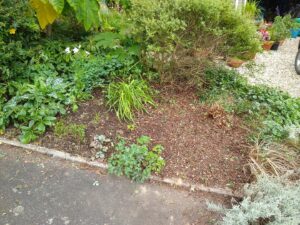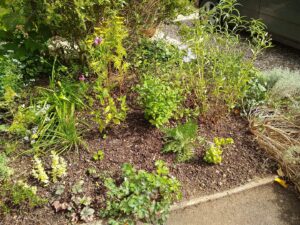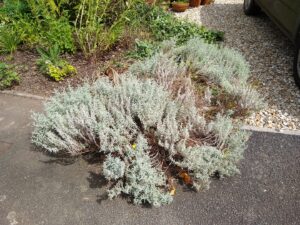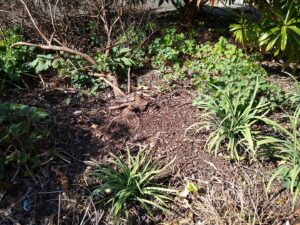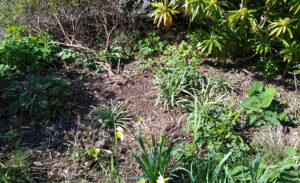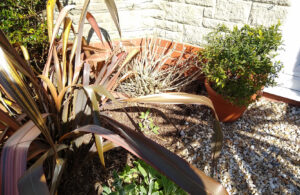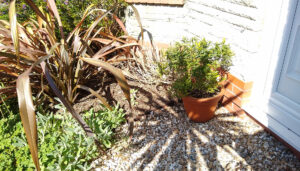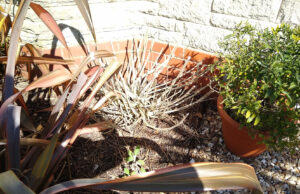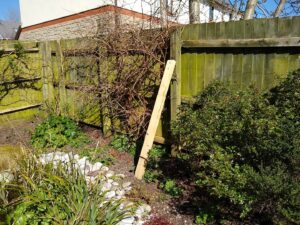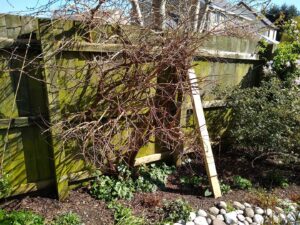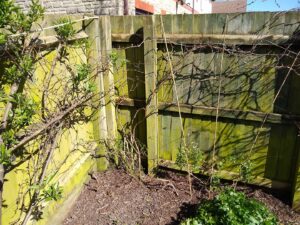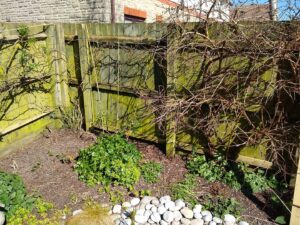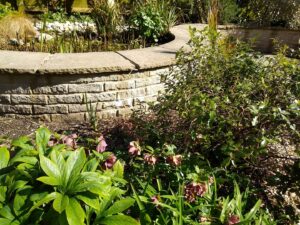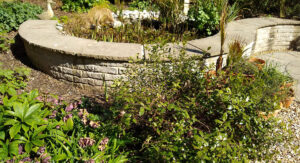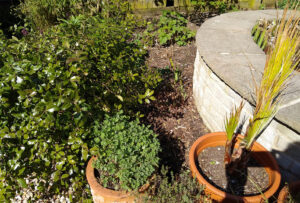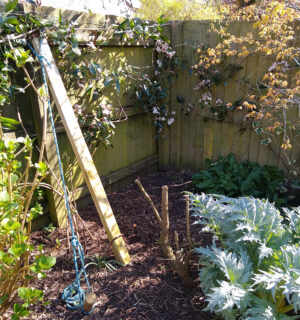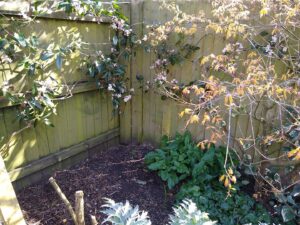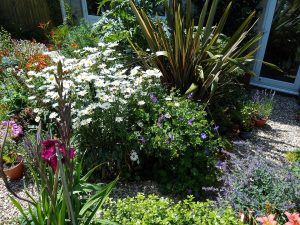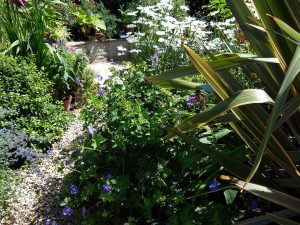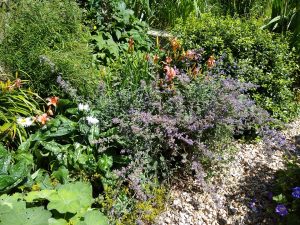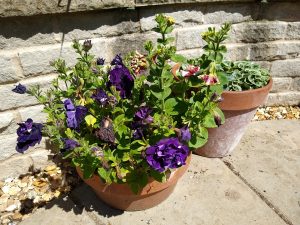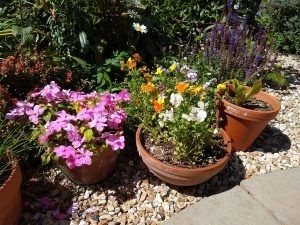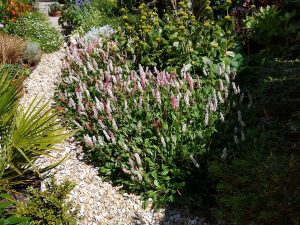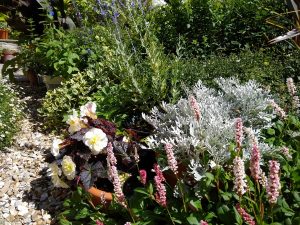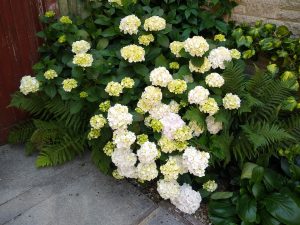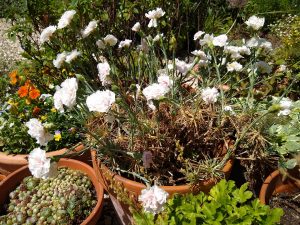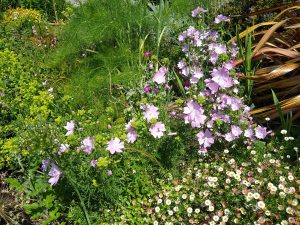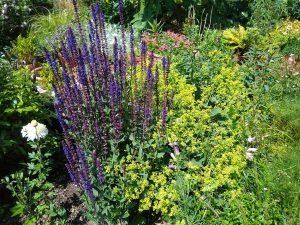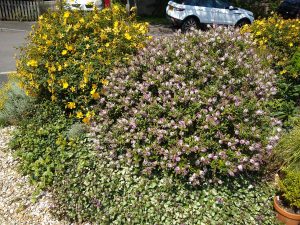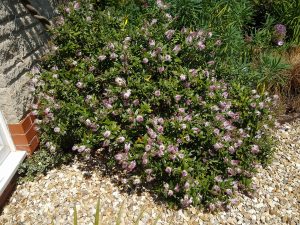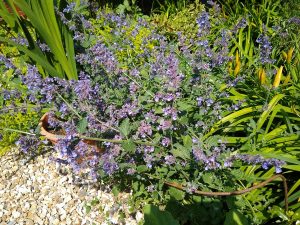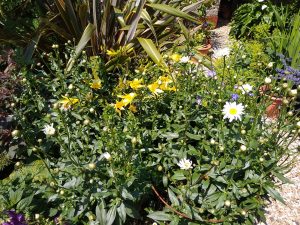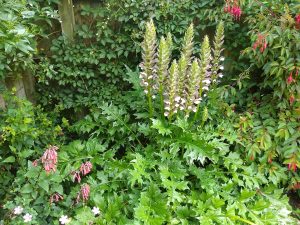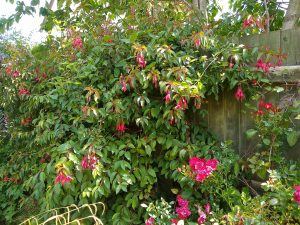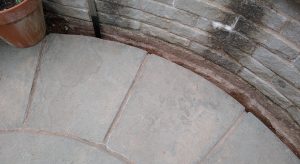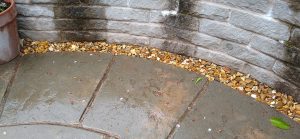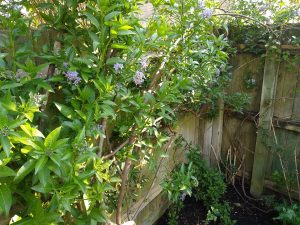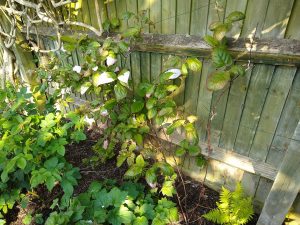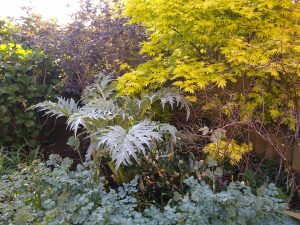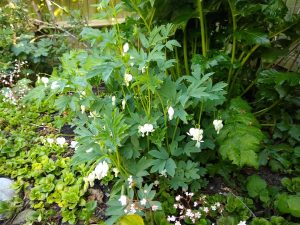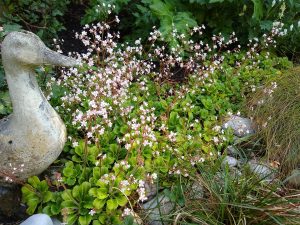The cistus in F2 has flopped over towards the street. This part is still flowering well, although quite a few stems facing up died and were cut away. This leaves space for something – bluebells, wood anenomes, primroses?
The hibiscus in F1 by the front door has never flowered, in spite of various pruning regimens and lots sulphate of potash. Its leaves are quite attractive in spring, summer and autumn, but I really need something with year-round interest next to the front door. There used to be a clematis ‘Mme Julia Correvon’ behind it but this never got going – probably too shaded. How about Nandina domestica?
The N half of the E fence needs covering all year round. The winter jasmine in the NE corner is slowly recovering from being pruned to the ground a year ago. I need a clematis cirrhosa ‘Freckles’, an ivy, possibly another ‘Sulphur Heart’, or ‘Goldheart’ if it’s vigorous enough, and another trachelospermum, perhaps asiaticum for a change. The hardy fuschia does a good job, but not in the winter months. It may survive the evergreen climbers for a few years. It’ll certainly be a useful support for them to get going through.
I’ve always thought the gap between the pittosporum and the pond wall was a mistake. I need something reasonably substantial and evergreen here. A pampas grass?
The clematis armandii is doing a superb job of covering the fencing in the SE corner. I need a plant growing in the bed. Fatshedera, bamboo, pittosporum? I cut the red-leaved elder back to the lowest shoots. Probably not far enough. At the National Botanic Garden they coppice some of theirs. The pyracantha never did anything (why?) and has been cut back to a stump preparatory to being dug out.
